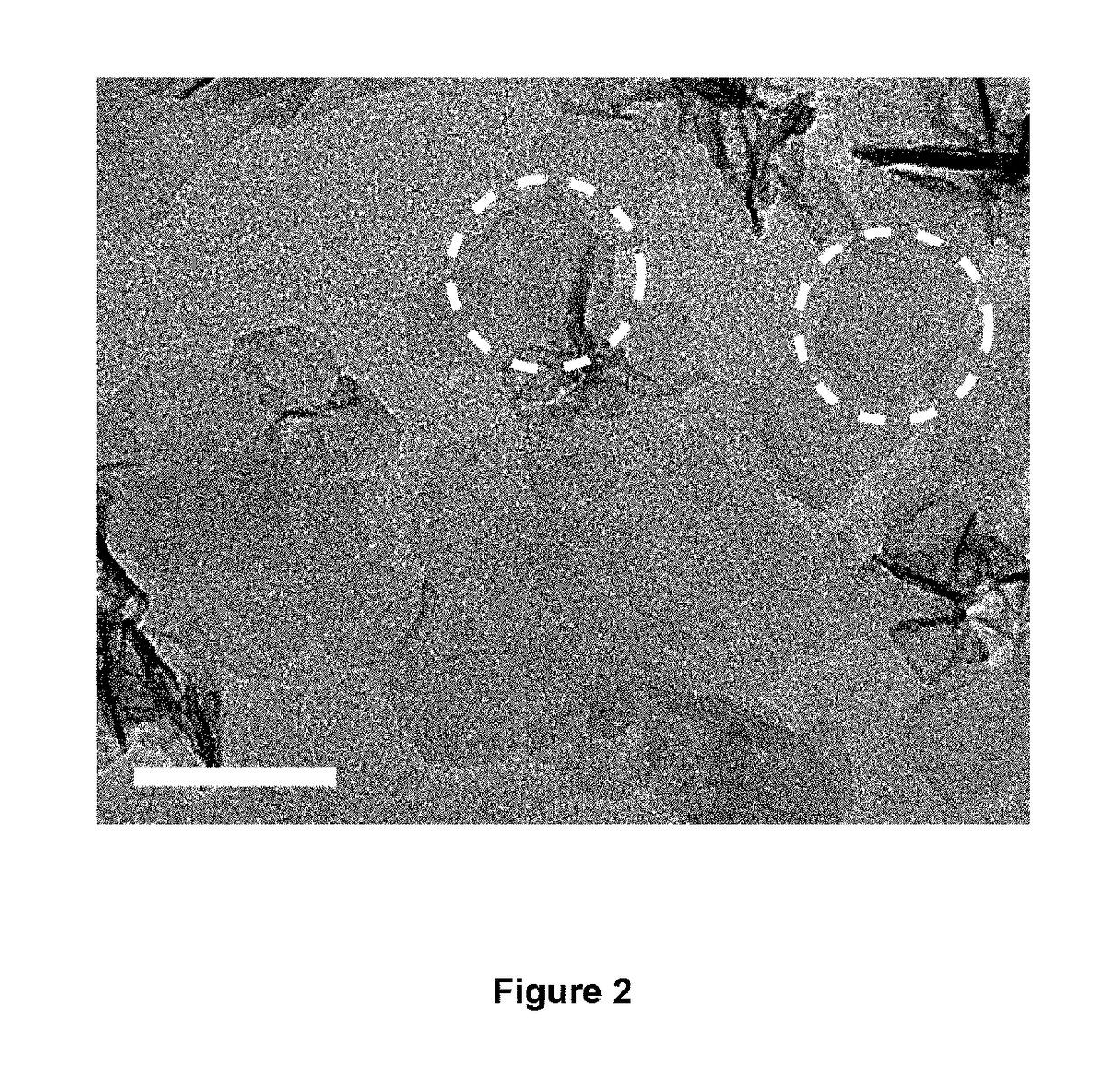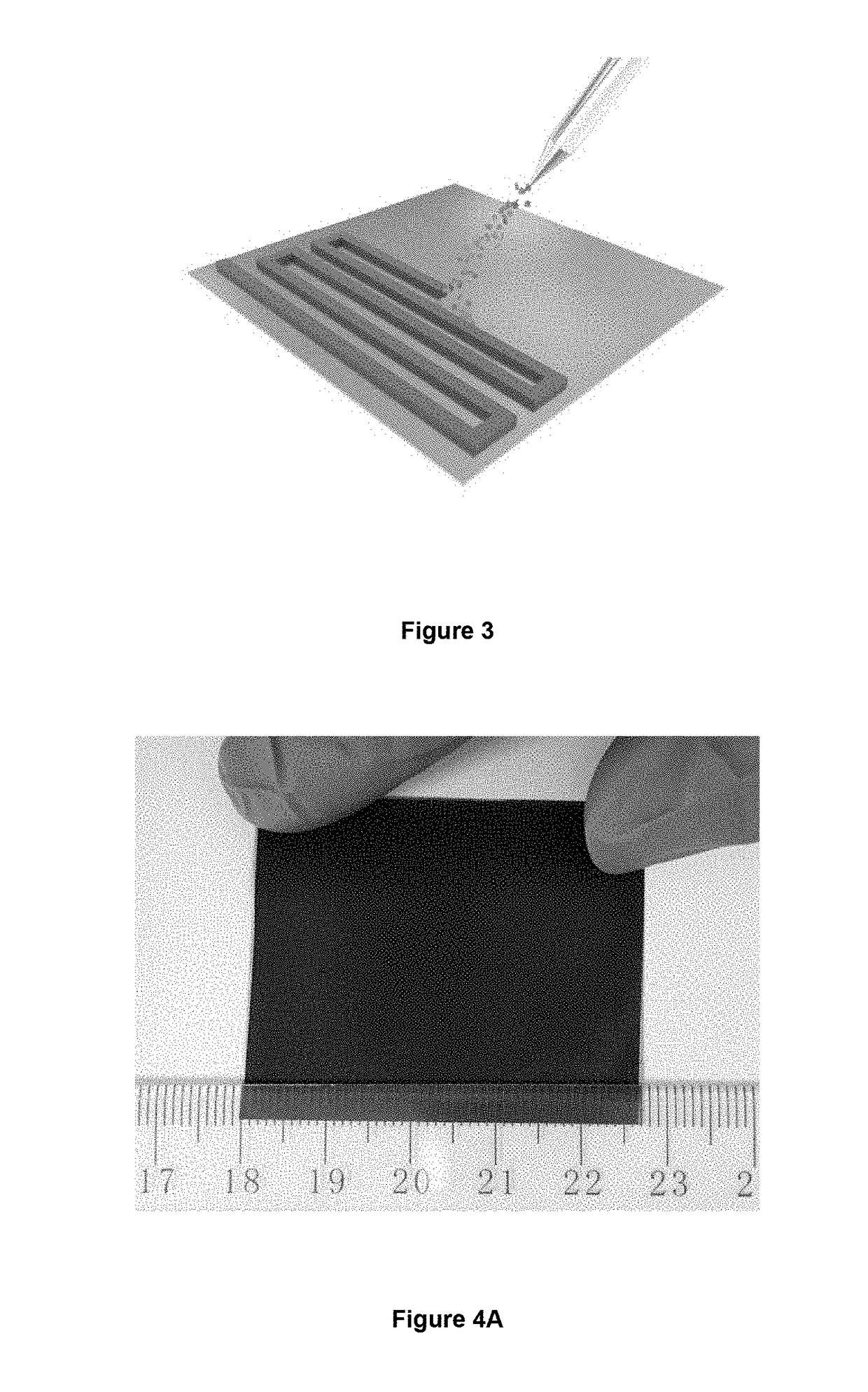MnO2 ANODE FOR LI-ION AND NA-ION BATTERIES
a rechargeable li-ion and na-ion battery technology, applied in the field of mno2 anodes, mno2 anodes for rechargeable li-ion and na-ion batteries, can solve the problems of increasing cost and time-consuming printing process, increasing the cost and time-consuming of cell manufacturing, and increasing the probability of reversible insertion/desertion of na-ions from the host material, etc., to increase versatility, cost-efficien
- Summary
- Abstract
- Description
- Claims
- Application Information
AI Technical Summary
Benefits of technology
Problems solved by technology
Method used
Image
Examples
example 1
Preparation of a MnO2 Anode on Copper Foil and Stainless Steel
[0100]10 wt % glucose solution was poured into the Teflon-sealed stainless autoclave (e.g., Parr 4748 acid digestion bomb to achieve a scalable production) at 180° C. for 180 minutes. When the reaction was completed, the suspension was poured out for filtration. The residues were collected and re-dissolved into water and sonicated sufficiently to form a 0.1 mg·mL−1 suspension. Then 16 mg·mL−1 KMnO4 solution was added into the suspension dropwise under continuous stirring and maintained at 40° C. for 6 hours. The mass ratio of KMnO4 and carbon was about 8:1. After that the suspension was sealed inside stainless steel autoclave at 100° C. for 4 hours. After cooling to room temperature, the suspension was filtered by using filter membrane (pore size: 2 nanosheets (MnNSs) suspension for spray printing. All chemicals employed were analytical reagents purchased from International Laboratory, USA and were used without further pu...
example 2
Characterization of MnO2 Anode on Copper Foil and Stainless Steel
[0104]Material characterizations are conducted using methods commonly known to a person skilled in the art and as described below.
[0105]The surface and cross sectional morphology and the energy-dispersive X-ray spectroscopy (EDX) of the MnO2 thin films were characterized by scanning electron microscopy (SEM) (Tescan MIMA3). TEM images and select area electron diffraction (SAED) pattern were recorded through a JEM 2100F (field emission) scanning transmission electron microscope (spherical aberration Cs: 2.3 mm, Chromatic aberration Cc: 1.0 mm, point resolution 0.23 nm) equipped with an Oxford INCA x-sight EDS Si(Li) detector. XRD pattern was carried out by using a Rigaku SmartLab X-ray diffractometer operating at 45 kV and 200 mA with Cu Kα source (λ=1.54056 Å). Raman spectrum was recorded by using a micro laser Raman spectrometer (DX2, Thermo, λ=532 nm). Atomic force microscopy (AFM) image was recorded by using Digital...
example 3
Preparation of Comparative MnO2-Based Anodes and Comparison with Presently Described Embodiments of the Invention
“CE” Represents Comparative Experimental Example
Preparation of the MnO2 / Nitrogen-Doped Graphene Hybrid Aerogel Composite (“CE-A”)
[0115]The MnO2 / nitrogen-doped graphene hybrid aerogel composites (MNGAs) were fabricated through a facile redox reaction between KMnO4 and carbon within NGHs. In a typical procedure, NGHs were immersed in a solution of 0.1 M KMnO4 / 0.1 M Na2SO4 for 120 minutes. The above mixture was vigorously shaken in a shaker at room temperature to promote the diffusion of KMnO4 / Na2SO4 solution into NGHs and the spontaneous reaction between KMnO4 and carbon in NGHs. After the reaction, the hybrid hydrogels were dialyzed with a great amount of deionized water for 48 h. The final products, MNGAs, were obtained by freeze drying the hybrid hydrogels for 24 h under vacuum.
Preparation of the 3D Porous Graphene / MnO2 Composite (“CE-B”)
[0116]The pretreated macroporous ...
PUM
| Property | Measurement | Unit |
|---|---|---|
| diameters | aaaaa | aaaaa |
| thickness | aaaaa | aaaaa |
| diameter | aaaaa | aaaaa |
Abstract
Description
Claims
Application Information
 Login to View More
Login to View More - R&D
- Intellectual Property
- Life Sciences
- Materials
- Tech Scout
- Unparalleled Data Quality
- Higher Quality Content
- 60% Fewer Hallucinations
Browse by: Latest US Patents, China's latest patents, Technical Efficacy Thesaurus, Application Domain, Technology Topic, Popular Technical Reports.
© 2025 PatSnap. All rights reserved.Legal|Privacy policy|Modern Slavery Act Transparency Statement|Sitemap|About US| Contact US: help@patsnap.com



